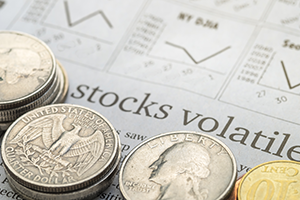 Yesterday gave a great example of what I meant in Friday’s post when I said the stock market was not crashing. For those who missed it, the U.S. markets dropped sharply during the day, with the Nasdaq down almost 5 percent on the day, only to rebound at day’s end and land in the green. This kind of reversal is rare and signaled that—at the depths of the decline yesterday—a number of investors saw enough value in those prices to step in and buy.
Yesterday gave a great example of what I meant in Friday’s post when I said the stock market was not crashing. For those who missed it, the U.S. markets dropped sharply during the day, with the Nasdaq down almost 5 percent on the day, only to rebound at day’s end and land in the green. This kind of reversal is rare and signaled that—at the depths of the decline yesterday—a number of investors saw enough value in those prices to step in and buy.
Risks Vs. Opportunities
As of this morning, we see stocks down again. Yesterday’s reversal was certainly not the all-clear for the market that we all would like to see. Yet it was an illustration that at some point, even when the market is dropping hard, there are buyers out there. Stocks at some price are attractive, and investors will act on that.
The turnaround came roughly about when valuations for the S&P 500 dropped below 20 times expected earnings over the next 12 months. This has been the floor pretty much since just after the pandemic started and was a reasonable place to see a bounce as investors compared risks versus opportunities—and decided to step in and buy. A bounce, however, is simply a short-term reaction. The fact that markets are down again this morning suggests there may be more volatility ahead as those risks still remain very real.
The Bounce Message
From a market perspective, that is not a bad thing. In fact, it is how it should work. With everything happening—the Fed meeting, inflation, supply chains, Ukraine, and so forth—we should expect markets to struggle to interpret what is happening. In that sense, the bounce is simply the next stage of that discovery process.
But the most important message of the bounce is that this is still a rational process and that there are buyers waiting for when it makes sense to step in. In a normal decline, buyers and sellers are both watching and acting as news and conditions change. In a crash, there are no buyers, which is why we get a crash. So the real message of yesterday is that volatility will continue on the very real risks, but also that buyers will step in at some point when values make sense.
It’s All About Valuations
And this is exactly the point I made last Friday. With the economy and earnings solid, it is all about valuations. Investors are trying to figure out at what valuation there is a balance of risk and reward. And until that balance is achieved? We will see more volatility. Not a crash, but a systemic weighing of risk versus opportunities.
Why are we seeing this volatility now? The more uncertainty, the more volatility, and the past several days have been particularly uncertain. Between the Fed meeting this week, which could substantially change the perceived path of interest rates; the evolving situation in Ukraine; and the ongoing Omicron wave, the economy and market could look very different in the near future. In that sense, recent volatility also makes sense.
Fundamentals Remain Solid
But here, too, there are some opportunities. After the Fed meeting, no matter what the outcome, markets will know what to expect—and are likely to calm. The pandemic looks to be cresting, which will also help alleviate uncertainty. And the Ukraine situation will resolve at some point. Significant uncertainties fade over time and, with them, volatility. As those uncertainties recede, the fundamentals will reassert themselves.
And this is where I sit. I expect more volatility. The chance of a more negative outcome for markets is real, but even if we get it, is likely to be limited. While the next couple of weeks are likely to be choppy, the foundations remain solid. And none of the ups and downs have changed that basic fact.


 Print
Print

